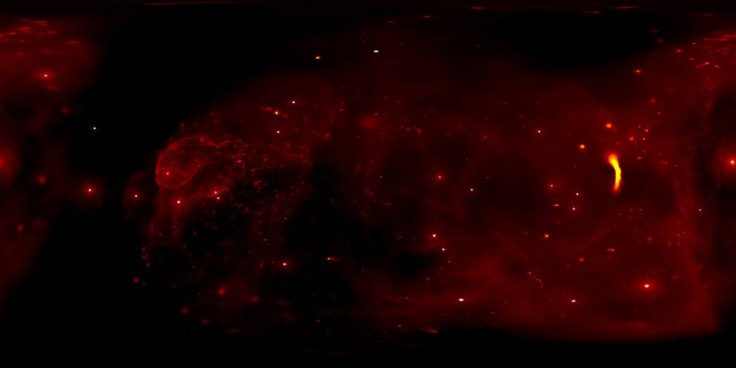NASA and scientists from around the globe are developing virtual reality movies which could help common men to get a 360-degree view of the Milky Way galaxy as observed by the most powerful telescopes. Soon, virtual reality (VR) goggles like Samsung Gear VR and Google Cardboard will help anyone to view the unexplored regions of the Universe through Youtube.
NASA's Chandra X-ray Observatory and other global observatory telescopes will provide inputs for the new 360-degree virtual tour to the center of the Milky Way galaxy. Viewers can control their own experience of mysteries of the galaxy and its fascinating environments, volatile giant star, and the central black hole Sagittarius A, by clicking or dragging the video or by clicking direction pads in the corner of VR device.
A viewer can also experience similar VR views of the movie on their smartphones by panning their phones to go to different portions of the sequence. Computer users can also experience the 360-degree virtual experience by clicking on the Youtube videos.

The Galactic center or the center of the Milky Way galaxy is located at a distance of 26,000 light years or about 150 trillion miles from the Earth. The video could take a person to the distance which cannot actually be reached by a person in his real life. The observatories captured different lights including X-ray and infrared light to produce the image data of the galaxy for the video.
Wolf-Rayet stars, the group of 30 massive star giants observed by the European Southern Observatory's Very Large Telescope could be seen orbiting within about 1.5 light years of the center of the Galaxy. The visuals would include mesmerizing images of powerful winds of gas from the surface of the stars carrying materials to the interstellar space and the Shockwaves formed due to the collision of newly ejected gas and previous emissions in the spread areas.
Chandra observatory has collected crucial data about the temperature and distribution of the multimillion-degree gas in the system using extensive observations of the central regions of the Milky Way. Shock waves heat the gas to millions of degrees to produce X-rays which are captured by the observatories.

The movie is formed through a time span of 500 years. It would show the galaxy's history from the past 350 years. It would also include 20 Wolf-Rayet stars (white, twinkling objects) orbiting the Sagittarius A (Sgr A*) which continuously ejects stellar winds ranging from black to red to yellow color scales. Even though Sgr A* is the most prominent object in the Galactic center, it still remains invisible for the observation devices. The black hole weighs about four million times the mass of the Sun.
However, its existence could be clearly identified by observing the changes in its stellar neighbors. Strong gravity of Sgr A* pulls in clumps of its neighboring materials while the tidal force stretches the materials closer to it. The black hole expels materials from it as occasional outbursts in its vicinity regions. Wolf-Rayet winds carry this gas to the interstellar spaces.
Christopher Russell of the Pontifical Catholic University of Chile used previously-detected disc-shaped X-rays to create the visualization. The X-ray disc extends to 0.6 light years from the black hole. The amount of X-rays generated would depend upon the strength of the outburst and the duration of time since an eruption. Stronger and recent outbursts result in weaker X-ray emissions.
Supermassive black hole emissions affect the region around it for hundreds of years. Ideas of new visualization and other scientific findings were presented during the 231st meeting of the American Astronomical Society in Washington DC, USA.









